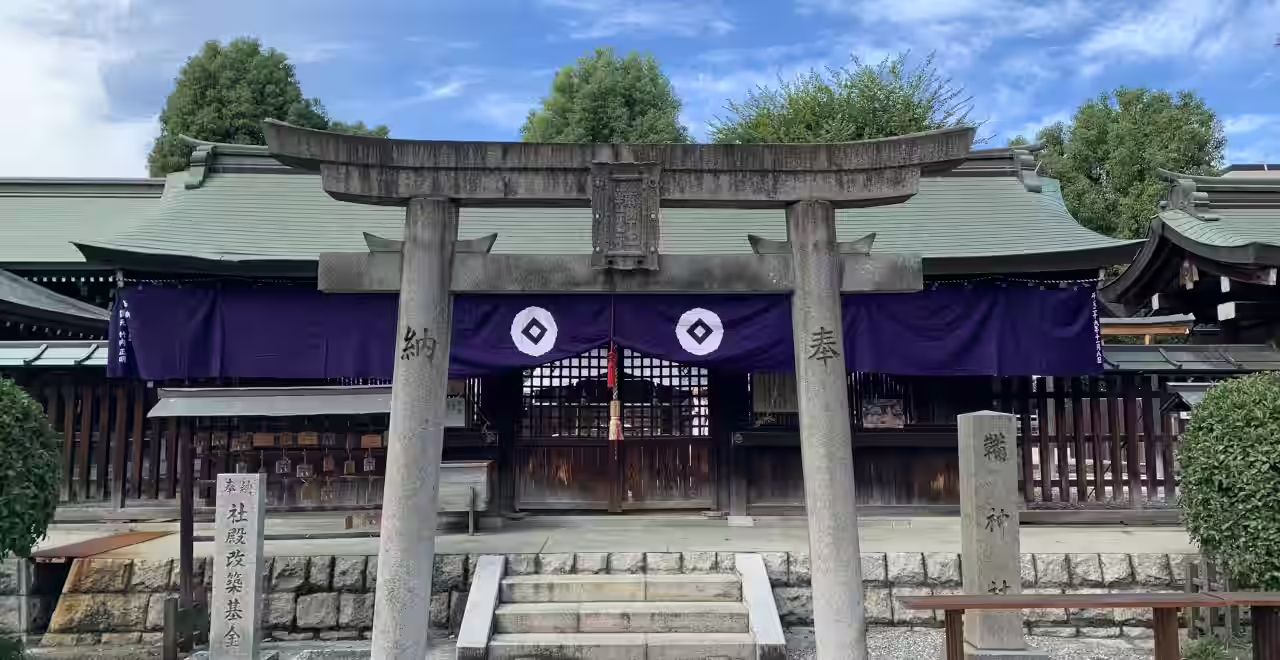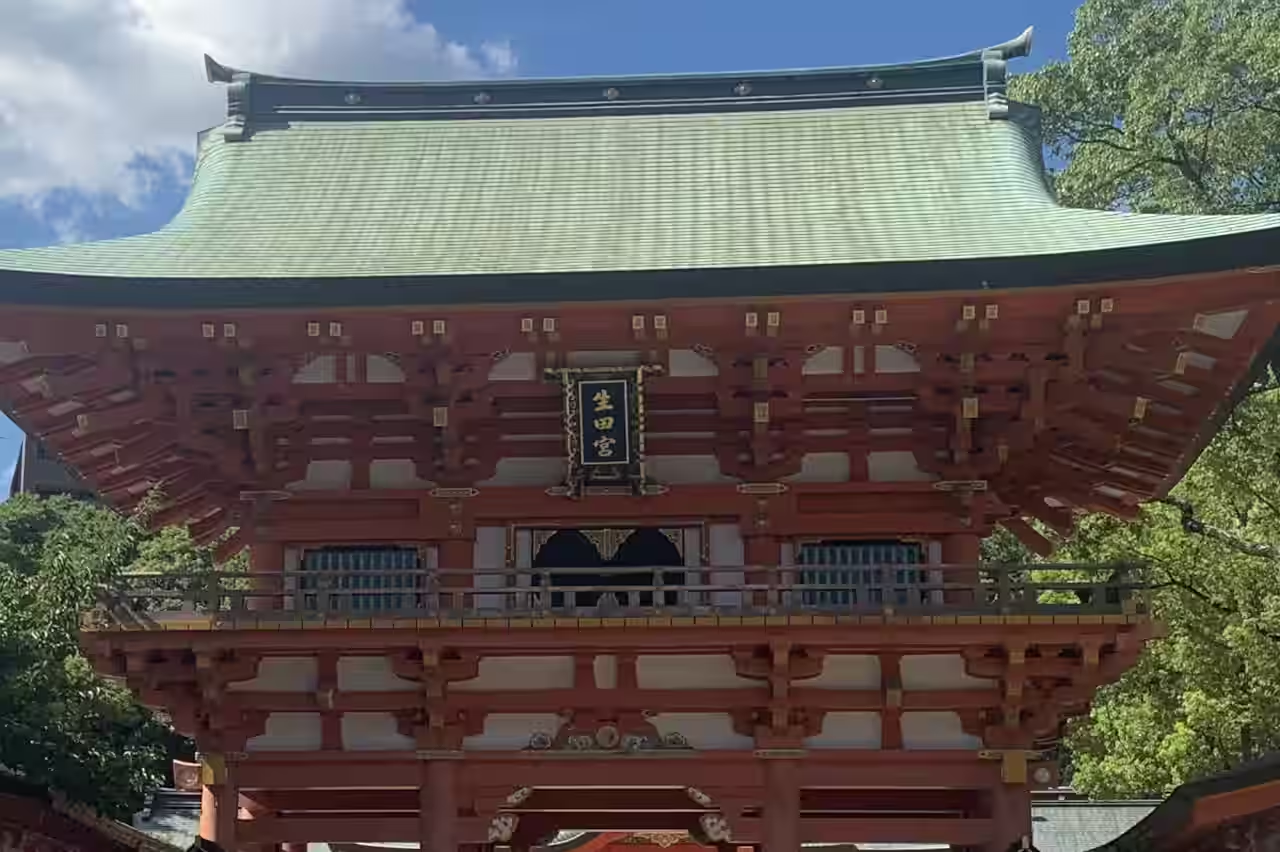The town of Miki, located northwest of Kobe, is believed to be Japan's oldest blacksmithing town, with roots dating back to the mid-5th century. It is said that the ancestral god of ironworking, Amanohitotsu-no-Mikoto, initiated Yamato blacksmithing in the Higashi-Harima region (modern-day Hyogo Prefecture). Later, Prince E from Baekje brought a group of highly skilled Korean blacksmiths to Mt. Niu when he sought refuge there. These craftsmen eventually settled in Miki, fostering technical advancement through collaboration and the exchange of knowledge with the local blacksmithing community.
This tradition continues today. To pass the blacksmithing tradition to the next generation, a monthly ancient forging event is held by the Miki Metal Traditional Forging Technique Preservation Society. One morning this spring, I visited the town of Miki to see the event. Each month, one of the five divisions—small knives, saws, chisels, planes, and trowels—takes a turn hosting the event.
When I reached the remains of Miki Castle by walking up the stone steps behind the Miki-uenomaru train station, I saw people gathering and setting up temporary stores. I asked a middle-aged man for directions to the forging event location. He said he didn't know. Feeling a little strange, I asked what the gathering was for. He said a memorial event would be held for the lord of Miki Castle. "Okay, it's just a local historical event," I thought to myself. He then asked where I came from. I replied, "I'm from Osaka." His eyes glittered somewhat, and he told me I should be introduced to the Mayor of Miki, who was shortly arriving as an honorable guest. I didn't get his joke.
Later in the afternoon, I learned about Miki's history at the local historical museum, built on the site of the second bailey of the castle. In the 16th century, during Oda Nobunaga's campaign to unify Japan, Hashiba Hideyoshi (later known as Toyotomi Hideyoshi) was ordered to move his forces westward to prepare to attack the Mori clan. Initially, Bessho Nagaharu, the lord of Miki, submitted to Nobunaga without fighting. However, he soon rebelled and formed an alliance with the Mori clan.
 Portrait of Bessho Nagaharu, lord of Miki castle
Portrait of Bessho Nagaharu, lord of Miki castle
For a year and ten months, fierce battles raged. Hideyoshi conquered all the castles in the province except for Miki Castle, which stood fortified as an impregnable fortress. Hideyoshi employed "siege warfare," cutting off aid supplies from the Mori clan. The castle defenders were so starved that they are said to have consumed not only horses and grass roots but also straw mixed into the wall plaster. Nagaharu finally agreed to surrender the castle, offering his life in exchange for the lives of his men. On January 17th, 1580, at the age of 24, he left behind a death poem: "Now there is no resentment; if it means exchanging my life for the lives of others." His 22-year-old wife and their children followed him in death.
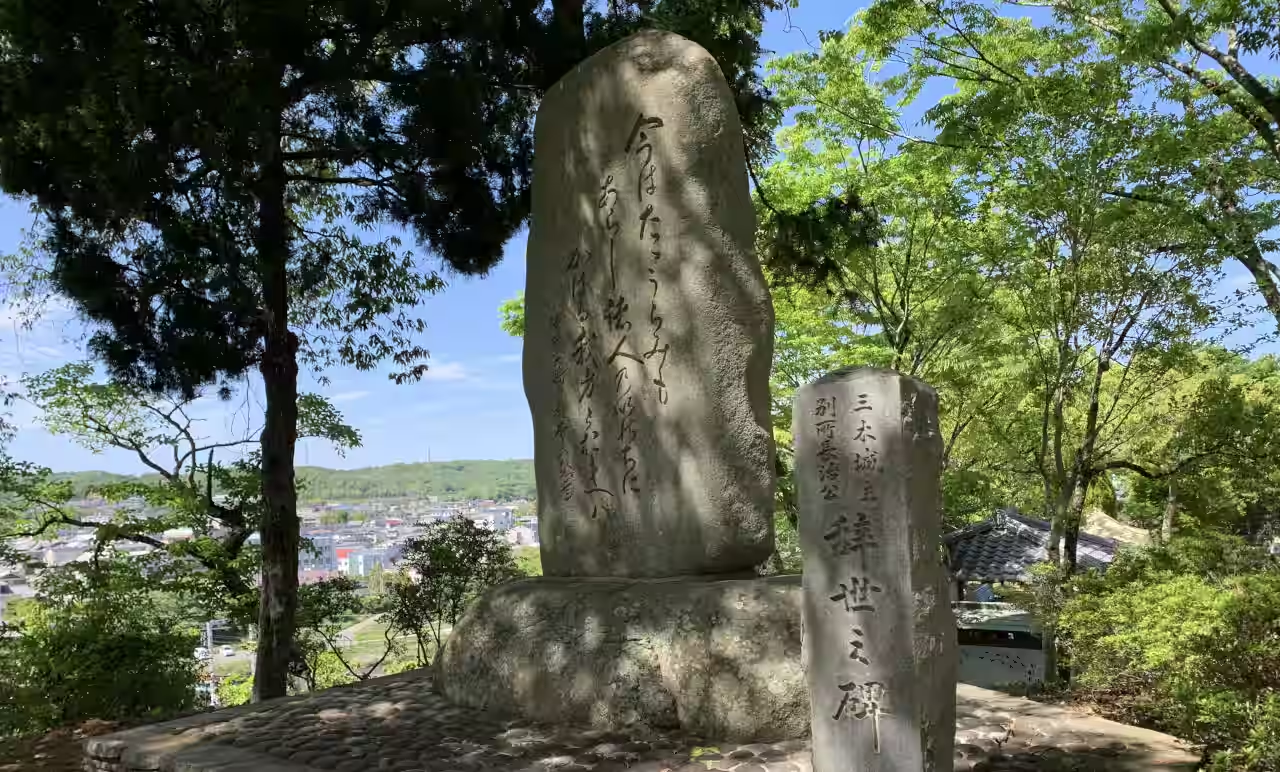 The stone monument with Nagaharu's death poem engraved at the site of Miki Castle
The stone monument with Nagaharu's death poem engraved at the site of Miki Castle
Before the war, swordsmiths were active in Miki town, much like in other parts of the country. During the conflict, Hideyoshi burned down castles, temples, and towns. After the war, Hideyoshi initiated extensive reconstruction efforts to bring people back to the town, laying the groundwork for the new Miki. Craftsmen were gathered from across the country for Miki's reconstruction and were granted tax exemptions, revitalizing the craftsmen. Blacksmiths, many of whom were originally swordsmiths, received numerous custom and demanding requests for chisels, saws, planes, and trowels, leading to rapid growth for Miki's carpentry tool blacksmiths.
Hideyoshi later unified Japan and built the symbolic Osaka Castle. Now I realize the irony and local sentiment towards Osaka, particularly on the day of the annual memorial ceremony for the local hero. He was implying that I was one of them, boldly walking into the event meant to honor the local hero's memory.
Later that day, reflecting on his perspective, I thought, "Wait, I shouldn't be seen as an enemy from Osaka but rather treated as one of them." After all, one of my ancestors was a vassal of the Tatsuno domain in Tatsuno, located further west in the same Banshu region. Unfortunately, I missed the opportunity to share this with him. Perhaps he would have offered me a cup of sake.
As I was about to leave, I encountered dozens of young men and women marching into the castle ruins, dressed in samurai armor and accompanied by the sounds of Taiko drums and wooden flutes. They all looked well-fed and healthy, which gave me a sense of relief and made me reflect on what might have happened in this very spot a few hundred years ago.
 Ancient forging demo creating small knives
Ancient forging demo creating small knives
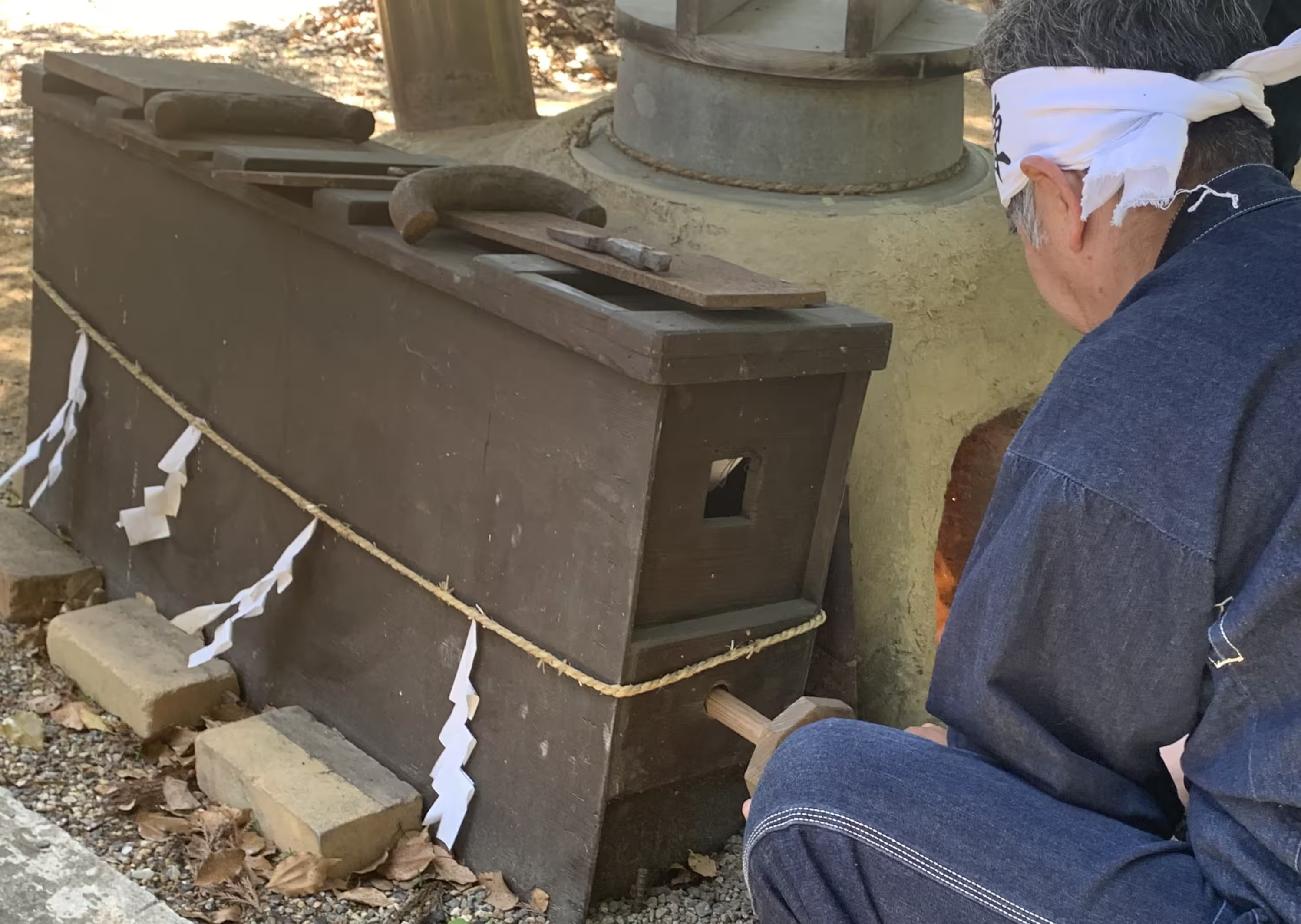 Operating a bellows to pump compressed air into the furnace
Operating a bellows to pump compressed air into the furnace
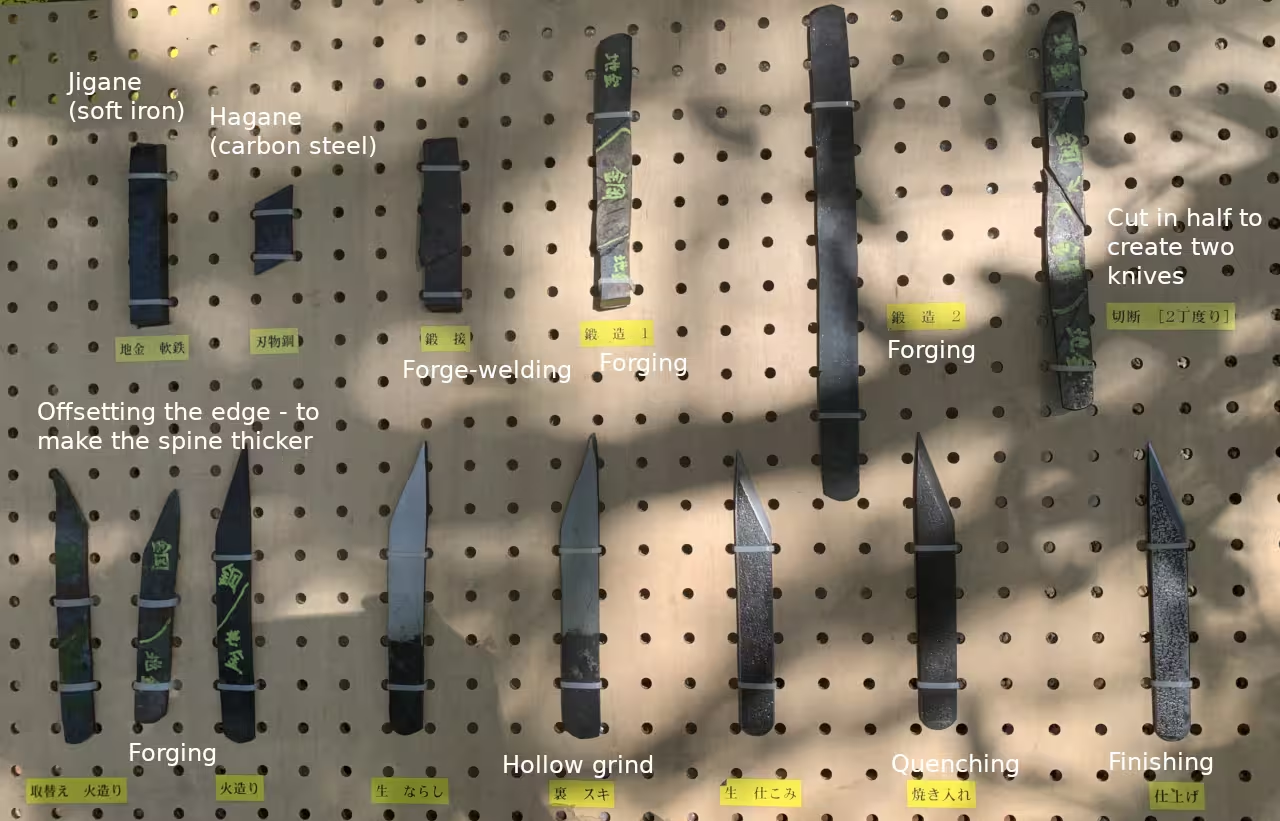 Forging process of creating small knives
Forging process of creating small knives

